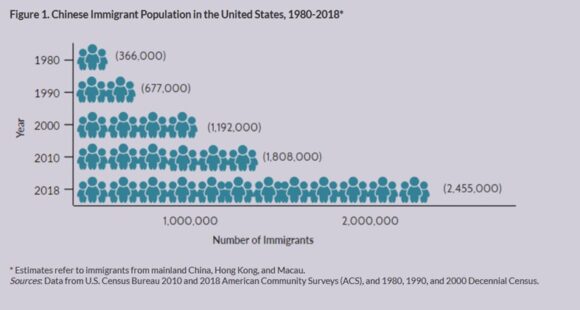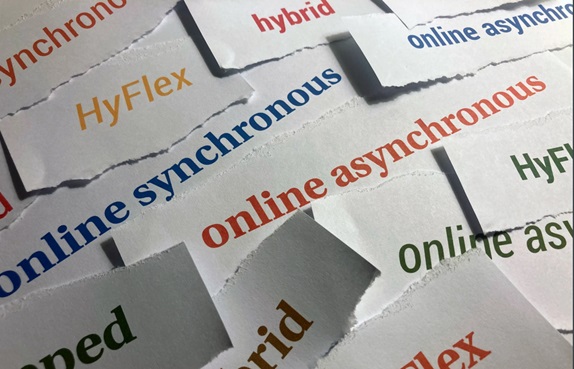
Dear Commons Community,
A major influx of Chinese migrants are making a perilous journey to the United States through Panama’s Darién Gap jungle to the California desert. As a result, Chinese people have become the fourth-highest nationality, after Venezuelans, Ecuadorians and Haitians, crossing the Darién Gap during the first nine months of this year, according to Panamanian immigration authorities.
Chinese asylum-seekers who spoke to The Associated Press, as well as observers, say they are seeking to escape an increasingly repressive political climate and bleak economic prospects.
They also reflect a broader presence of migrants at the U.S.-Mexico border — Asians, South Americans and Africans — who made September the second-highest month of illegal crossings and the U.S. government’s 2023 budget year the second-highest on record.
The pandemic and China’s COVID-19 policies, which included tight border controls, temporarily stemmed the exodus that rose dramatically in 2018 when President Xi Jinping amended the constitution to scrap the presidential term limit. Now emigration has resumed, with China’s economy struggling to rebound and youth unemployment high. The United Nations has projected China will lose 310,000 people through emigration this year, compared with 120,000 in 2012.
It has become known as “runxue,” or the study of running away. The term started as a way to get around censorship, using a Chinese character whose pronunciation spells like the English word “run” but means “moistening.” Now it’s an internet meme.
“This wave of emigration reflects despair toward China,” Cai Xia, editor-in-chief of the online commentary site of Yibao and a former professor at the Central Party School of the Chinese Communist Party in Beijing.
“They’ve lost hope for the future of the country,” said Cai, who now lives in the U.S. “You see among them the educated and the uneducated, white-collar workers, as well as small business owners, and those from well-off families.”
Those who can’t get a visa are finding other ways to flee the world’s most populous nation. Many are showing up at the U.S.-Mexico border to seek asylum. The Border Patrol made 22,187 arrests of Chinese for crossing the border illegally from Mexico from January through September, nearly 13 times the same period in 2022. Arrests peaked at 4,010 in September, up 70% from August. The vast majority were single adults.
The popular route to the U.S. is through Ecuador, which has no visa requirements for Chinese nationals. Migrants from China join Latin Americans there to trek north through the once-impenetrable Darién and across several Central American countries before reaching the U.S. border. The journey is well-known enough it has its own name in Chinese: walk the line, or “zouxian.”
The monthly number of Chinese migrants crossing the Darién has been rising gradually, from 913 in January to 2,588 in September. For the first nine months of this year, Panamanian immigration authorities registered 15,567 Chinese citizens crossing the Darién. By comparison, 2,005 Chinese people trekked through the rainforest in 2022, and just 376 in total from 2010 to 2021.
Short video platforms and messaging apps provide not only on-the-ground video clips but also step-by-step guides from China to the U.S., including tips on what to pack, where to find guides, how to survive the jungle, which hotels to stay at, how much to bribe police in different countries and what to do when encountering U.S. immigration officers.
Translation apps allow migrants to navigate through Central America on their own, even if they don’t speak Spanish or English. The journey can cost thousands to tens of thousands of dollars, paid for with family savings or even online loans.
For example, Xi Yan, 46, and her daughter Song Siming, 24, didn’t trek the Ecuador-Mexico route, but instead flew into Mexico via Europe. With help from a local guide, the two women crossed the border at Mexicali into the U.S. in April.
“The unemployment rate is very high. People cannot find work,” said Xi Yan, a Chinese writer. “For small business owners, they cannot sustain their businesses.”
Xi Yan said she decided to leave China in March, when she traveled to the southern city of Foshan to see her mother but had to leave the next day when state security agents and police officers harassed her brother and told him that his sister was not allowed in the city. She realized she was still on the state blacklist, six years after being detained for gathering at a seaside spot to remember Liu Xiaobo, a Nobel peace laureate who died in a Chinese prison. In 2015, she was locked up for 25 days over an online post remembering the victims of the 1989 Tiananmen Massacre.
Her daughter, Song, agreed to leave with her. A college graduate, the daughter struggled to find work in China and became depressed, the mother said.
Despite the challenges to survive in the U.S., Xi Yan said it was worth it.
“We have freedom,” she said. “I used to get nervous whenever there was a police car. Now, I don’t have to worry about it anymore.”
Migrants hoping to enter the U.S. at San Diego wait for agents to pick them up in an area between two border walls or in remote mountains east of the city covered with shrubs and large boulders.
Many migrants are released with court dates in cities nearest their final destination in a bottlenecked system that takes years to decide cases. Chinese migrants had an asylum grant rate of 33% in the 2022 budget year, compared with 46% for all nationalities, according to Syracuse University’s Transactional Records Access Clearinghouse.
Catholic Charities of San Diego uses hotels to provide shelters for migrants, including 1,223 from China in September. The average shelter stay is a day and a half among all nationalities. For Chinese visitors, it’s less than a day.
“They get dropped off in the morning. By afternoon they are looking to reunite with their families. They’re going to New York, they’re going to Chicago, they’re going to all kinds of places,” said Vino Pajanor, the group’s chief executive. “They don’t want to be in a shelter.”
In September, 98% of U.S. border arrests of Chinese people occurred in the San Diego area. At the transit stop, migrants charge phones, snack, browse piles of free clothing and get travel advice.
Signs at portable bathrooms and information booths and a volunteer’s loudspeaker announcements about free airport shuttles are translated to multiple languages, including Mandarin. Taxi drivers offer rides to Los Angeles.
Many migrants who spoke to the AP did not give their full names out of fear of drawing attention to their cases. Some said they came for economic reasons and paid 300,000 to 400,000 yuan ($41,000 to $56,000 for the trip).
In recent weeks, Chinese migrants have filled makeshift encampments in the California desert as they wait to turn themselves in to U.S. authorities to make asylum claims.
Near the small town of Jacumba, hundreds huddled in the shadow of a section of border wall and under crude tarps. Others tried to sleep on large boulders or under the few trees there. Small campfires keep them warm overnight. Without food or running water, the migrants rely on volunteers who distribute bottled water, hot oatmeal and peanut butter and jelly sandwiches.
Chen Yixiao said he endured a hard journey to come to the U.S. He said life had become difficult back home, with some migrants experiencing issues with the government and others failing in business.
“I’m very happy to be in the U.S. now. This is my dream country,” said Chen, who planned to join his relatives in New York and find work there.
Good luck to these individuals. I hope they find what they are looking for in our country.
Tony












